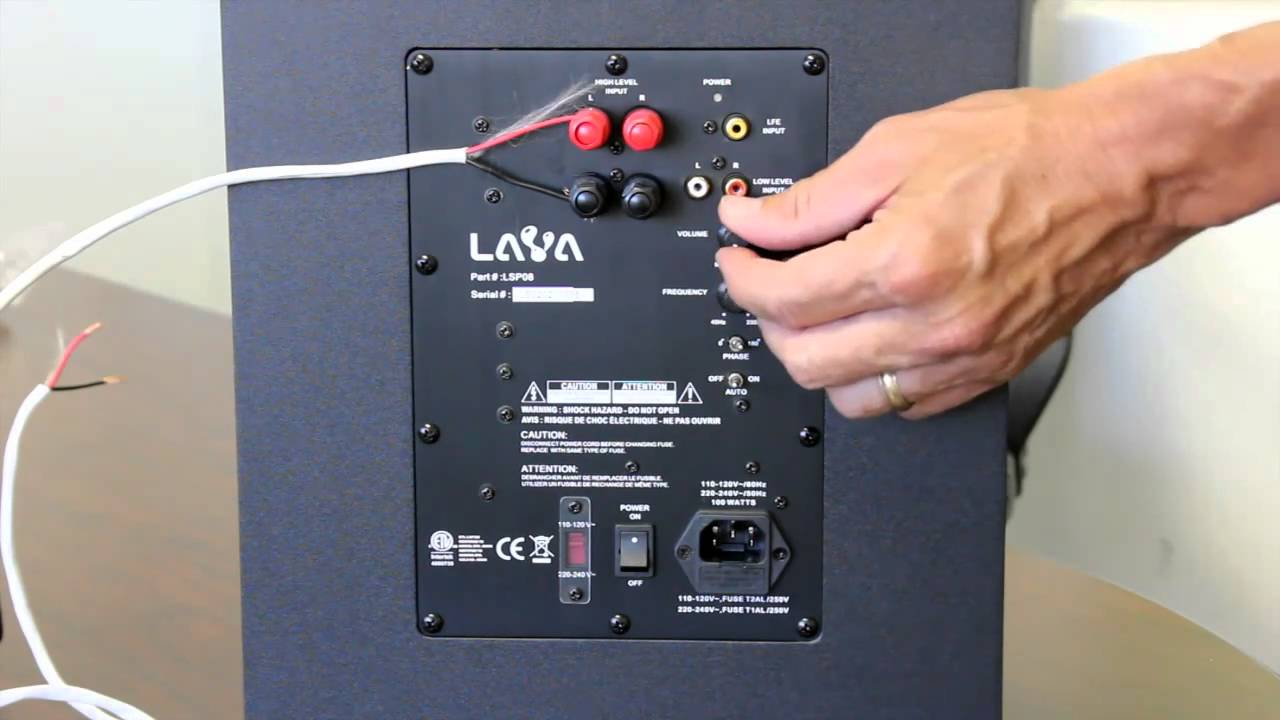NOTE: This post may contain affiliate links.
AgoraReviews.com participates in the Amazon Services LLC Associates Program, an affiliate advertising program designed to provide a means for sites to earn advertising fees by advertising and linking to Amazon.com.
In this article, you’ll learn how to connect a subwoofer to an AV receiver. We’ll provide you with step-by-step instructions that are easy to follow, so you can enjoy the enhanced sound quality in your audio system. Whether you have a Denon, Yamaha, Sony, or another brand of AV receiver, we’ve got you covered. connect your subwoofer to your AV receiver with confidence and elevate your listening experience. Let’s get started!
How To Connect Subwoofer To AV Receiver

Introduction
Connecting a subwoofer to an AV receiver is a crucial step in achieving the ultimate home theater experience. A subwoofer adds depth and impact to your audio, making movies and music sound more immersive and lifelike. In this article, we will guide you through the step-by-step process of connecting a subwoofer to an AV receiver, ensuring optimal performance and audio quality.
Step 1: Choose the right subwoofer
Before diving into the intricacies of the connection process, it is essential to choose the right subwoofer for your setup. Understanding the specifications is key to making an informed decision. Look for subwoofers that offer a frequency response that complements your AV receiver’s capabilities. matching the subwoofer with the AV receiver ensures seamless integration and prevents any potential compatibility issues. Additionally, consider the size and layout of the room, as it will impact the overall performance of the subwoofer.
Step 2: Gather the necessary cables and accessories
To connect your subwoofer to the AV receiver, you will need the appropriate cables and accessories. The most common type of cable used for this purpose is an RCA cable. It is relatively inexpensive and widely available. However, depending on your setup, you may require other types of cables, such as optical cables or HDMI cables. Additionally, consider investing in additional accessories like a subwoofer isolation pad or a power conditioner to ensure optimal performance.
Step 3: Identify the subwoofer output on the AV receiver
Locating the subwoofer output on the AV receiver is the next step. Depending on the model and brand of the receiver, the subwoofer output may be labeled as “subwoofer pre-out” or “LFE (Low-Frequency Effects)” output. Familiarize yourself with the user manual or consult the manufacturer’s website to accurately identify the specific location of the subwoofer output.
Step 4: Connect the subwoofer to the AV receiver
Once you have identified the subwoofer output, it’s time to connect the subwoofer to the AV receiver. The most common method is connecting via a single cable. Simply plug one end of the cable into the subwoofer output on the receiver and the other end into the corresponding input on the subwoofer itself. However, some subwoofers may require dual cables for connection. In such cases, connect both ends of the cables into the corresponding outputs on the receiver and the inputs on the subwoofer. Alternatively, wireless subwoofer setups are becoming increasingly popular for their convenience and flexibility.
Step 5: Adjusting the subwoofer settings
After connecting the subwoofer to the AV receiver, it’s crucial to adjust the settings for optimal performance. Access the AV receiver’s menu and navigate to the audio settings. Find the option to configure the crossover frequency. This setting determines the range of frequencies that will be sent to the subwoofer. Experiment with different frequencies to find the perfect balance between the subwoofer and the other speakers in your setup. Additionally, set the subwoofer level to ensure it blends seamlessly with the rest of the audio. Fine-tuning the phase can also improve subwoofer performance, eliminating any phase cancellation issues.

Step 6: Testing and troubleshooting
After adjusting the settings, it’s essential to test the subwoofer to ensure it is functioning correctly. Play audio that includes deep bass and low-frequency effects to evaluate the subwoofer’s performance. If the subwoofer appears weak or non-functional, double-check the connections and settings. Also, consider optimizing the subwoofer placement in the room. Experiment with different positions to find the spot that maximizes bass response and minimizes resonances. If you encounter any issues, consult the user manual or reach out to the manufacturer’s customer support for guidance.
Step 7: Calibration and room correction
To further enhance the audio experience, utilize the auto-calibration features available on many AV receivers. These features analyze the room’s acoustics and adjust the audio settings accordingly to deliver the best possible sound quality. Additionally, consider using room correction software, such as Audyssey or Dirac, to fine-tune the EQ settings and compensate for any room anomalies. Calibration and room correction can significantly improve the overall audio performance, taking your home theater experience to new heights.

Step 8: Advanced subwoofer setup
For those seeking a more advanced setup, multiple subwoofers can be used to achieve smoother and more even bass distribution throughout the room. This configuration helps to eliminate unwanted room resonances and provides a more immersive listening experience. Additionally, in a multi-channel setup, proper bass management is crucial to ensure seamless integration between the subwoofer and the main speakers. Consult the AV receiver’s manual for detailed instructions on configuring the bass management settings. Furthermore, consider integrating the subwoofer with other audio devices, such as a dedicated stereo system or a turntable, to enhance the overall audio performance.
Conclusion
Properly connecting a subwoofer to an AV receiver is vital to achieving a truly immersive audio experience. By following the steps outlined in this article, you can ensure seamless integration, optimal performance, and enhanced audio quality. The right subwoofer, along with the necessary cables and accessories, in conjunction with properly adjusted settings and calibration, will transform your home theater or audio setup. Remember to experiment with different settings and placements to find the perfect balance for your specific environment. So, go ahead and connect that subwoofer to your AV receiver, and get ready to be blown away by the immersive sound that awaits you.

